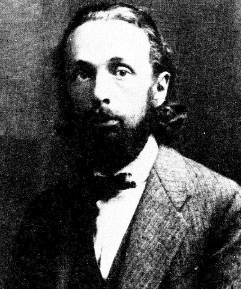
Who is Alexander Rechnitzer?
Alexander Rechnitzer was an exceptionally gifted mechanic and inventor who laid the ground for fully automatic calculating machines. He was born to a German-speaking Jewish family in Bratislava (formerly Preßburg), Austro-Hungarian Empire, around 1880.
Rechnitzer was a holder of various patents for calculating machines in Austria, France, the USA, Sweden, Switzerland, Germany, Canada, and Great Britain. However, he was not an excellent entrepreneur.
Quick Facts
- Full Name
- Alexander Rechnitzer
- Net Worth
- N/A
- Children
- N/A
- Nationality
- American
- Place of Birth
- Preßburg
- Fields of Expertise
- [“Mathematics”]
- Institutions
- Technische Hochschule (Technical College of Vienna, now Technical University)
- Contributions
- Fully automatic division and multiplication calculating machine
At 19, he developed his first trial model and was granted his first patent (Austrian patent Nr. AT15514) at 24. He was a true example of “winners never quit.” Not achieving notable success with his electrically driven, fully automated calculator (Autarith) didn’t stop him. Instead, he focused on improving the machine.
Early Life
Alexander Rechnitzer’s parents lived in Körmend before moving to Preßburg in the 1870s, where his elder sister was born in 1878. They later relocated to Vienna in the early 1880s after the birth of Alexander. They had two more children (Paula and Hilda), Rechnitzer’s young sisters, in Vienna.
After graduating from Technical University in Vienna (where he studied mechanical engineering), Rechnitzer moved to Berlin to seek a better fortune. Between 1905 and 1909, his plans were interrupted, forcing him to return to Vienna.
Career
Rechnitzer dedicated his life to developing and perfecting his first motor-driven machine, the Autarith. Based on his patent, the machine was demonstrated to the public in 1906, during a trade fair in New York. It was published in several US magazine articles, including The Railway Stage and The Business World, creating awareness among general users and businesses.
Keuffel & Esser, a calculating machine manufacturer based in New York, managed to produce a pre-series of Rechnitzer’s ten machines. They sold several copies in the US. Sadly, Rechnitzer didn’t have the entrepreneurship skills required to create adequate market demand for his invention.
In 1909, he founded Autarit-Gesellschaft m.b. H company in Vienna with a share capital of 220,000 crowns with The Rex Co. as the majority shareholder and him the minority shareholder. However, he also didn’t have much success with his company.
What Did Alexander Rechnitzer Invent?
The Autarit (Autarith)

Rechnitzer invented the Autarit, also referred to as Autarith, a fully automatic calculating machine that could perform multiplication and division operations as well as subtraction and addition. This machine employed a similar principle to the Charles-Xavier Thomas de Colmar machine.
Rechnitzer’s device had a result window with number wheels, stepped drums, and two rows of setting sliders for eight and nine digits, respectively. The sliders were installed on the lower part and beneath the result widow on the movable cartridge. It was considered a fascinating machine and displayed a maximum of 16 digits.
How Did it Function?
The machine had to be set to adding mode with a button push for addition operations. The addends had to be keyed in using the two slots of the sliders. The machine could carry on the calculations, and by pressing the motor’s start key, the answer would be displayed on the result window.

Similarly, when performing subtraction operations, the device had to be set to subtraction mode. The minuend had to be specified using the number wheels, and the subtrahend entered using the sliders. The machine would perform the calculations and display the difference in the result mechanism upon pressing the start key of the motor.
The calculating device had to be set to multiplication mode by adjusting the control lever. The multiplicand had to be entered with the number wheels and the multiplier by setting the sliders. Turning on the motor allowed the machine to complete the calculations automatically. Every shaft rotation increased the number wheels, moving the sliders towards zero. After hitting the zero mark, the results would be displayed on the result window.
Division calculations would be performed by entering the dividend with the numeric wheels and the divisor in the lower slots. Setting the machine to divide mode using the control lever allowed the device to automatically complete the computations and display the results on the result window.
The Autarith could produce 16-digit results in 12 to 20 seconds. It was one of the most complex inventions at the time. However, the manufacturer (Keuffel & Esser) adopted a serial production line for this product, though not in mass quantities. The machine is in the Technical Museum in Vienna.
Automatic Four-Rules Calculating Machine

Rechnitzer started working on this salable model in 1912. His efforts with this prototype yielded better results than his first invention, although not as much market success was recorded as he probably anticipated.
The machine relied on a belt drive mechanism to perform automatic shortcut multiplications and full automatic division calculations. It had a storage memory, which allowed it to perform a series of computations. For instance, the automatic four-rules calculating machine could install a second multiplicand and multiplier while computing the last preceding multiplication.
It would also install new dividend entries while calculating the last preceding division. The whereabouts of this prototype have been unknown since 1984.

Alexander Rechnitzer: Marriage, Divorce, Children, and Personal Life
Details about whether or not Rechnitzer was ever married or had children are unknown. However, the latter part of his life resulted in tragedy.
In 1921, Rechnitzer traveled back to New York, hoping to profit from his automatic four-rules calculating machine. He was a good engineer but adamant about modifying his concept to suit consumer needs. As a result, he faced stiff competition from other models in the industry, i.e., Madas, Mercedes-Euklid, and Monroe, that adopted multiplications and division mechanisms similar to his invention.
Unable to transform his concept into profitable revenue, he lost hope and committed suicide in 1922. His body was retrieved in New York’s East River, and he was laid to rest in Potter’s field.
Undoubtedly, Rechnitzer was a great inventor whose ideas continued to be commercialized by other great minds in this world. His detailed patents prove he was an accomplished engineer and a perfectionist.
Alexander Rechnitzer: Awards and Achievements
Rechnitzer did not receive any awards but had received 36 patents: (Austria – 4, Germany-10, Switzerland -2, USA-6, France-4, Great Britain-7, Canada-1, and Sweden-2).
He also evolved the first automatic calculating machine, making it possible to perform multiplication and division operations.
Thanks to Rechnitzer’s revolutionary ideas, along with those of his successors and predecessors, we now have digital calculators and computers.




